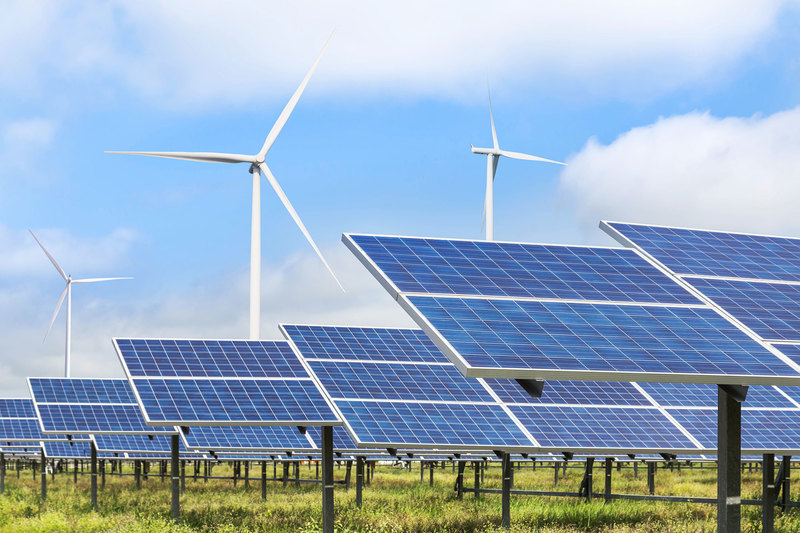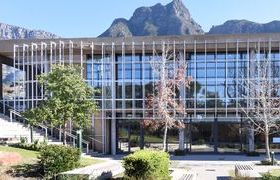Just Transition Transaction case study – towards energy equity
26 October 2020 | Story Nicole Forrest. Photo Adobe Stock. Read time 7 min.
Three University of Cape Town (UCT) climate change experts have carried out a case study to understand what a just transition of South Africa’s energy landscape into a low-carbon environment could look like. This Just Transition Transaction (JTT) aims to simultaneously solve the electricity supply crisis in South Africa while moving the country towards renewable energy, its emissions commitments and job creation in terms of the Paris Agreement.
With 2 500 sunlight hours per year, the country would need only 3 000 km2 of solar photovoltaic (PV) cells (0.25% of the total land mass) to meet its electricity demand. Add wind, the theoretical potential of which could generate enough electricity to keep the lights on across the world, and it seems that renewable energy is the logical choice for power production.
Despite this, electricity supply in South Africa has been insufficient for more than a decade. This supply crisis has been driven by major operational, structural and financial challenges in the energy sector. Operationally, reliance on inefficient and outdated plants makes it impossible to produce enough power to meet the country’s needs.
Low tariffs that are not fully cost reflective and which often go unpaid by municipalities have added to structural challenges caused by corruption. Finally, with growing debt and no access to capital markets, the financial constraints facing Eskom place the state-owned entity (SOE) in a dire situation.
Adding to these challenges, heavy reliance on coal-fired power has meant that South Africa is the world’s 14th largest emitter of greenhouse gases, having produced 556 tonnes of carbon dioxide (CO2) in 2017 alone.
A roadmap
In their case study, Climate finance to transform energy infrastructure as part of a just transition in South Africa, Professor Harald Winkler of the Faculty of Engineering & the Built Environment, Samatha Keen, a UCT international climate policy consortium research partner, and Dr Andrew Marquard from the Department of Chemical Engineering set out a roadmap for resolving South Africa’s energy crisis through a shift to renewable energy. The study outlines how a just transition to renewables could address the above challenges, create jobs and move South Africa towards net-zero emissions.
“A just transition in South Africa’s electricity sector from coal to cleaner energy is critical for climate change mitigation.”
“A just transition in South Africa’s electricity sector from coal to cleaner energy is critical for climate change mitigation. And to be just, the transition must leave no one behind. A just transition transaction, as a mechanism, mobilises blended finance to fund the accelerated phase-out of coal, thereby accelerating a transition from coal to renewable energy, and the protection of the livelihoods of those communities and workers affected,” said Professor Winkler.
Similar to the Integrated Resource Plan (IRP), the latest version of which was released in 2019, the study’s JTT aims to develop infrastructure based on a least-cost electricity supply-and-demand balance. However, said the authors, “The IRP includes a schedule for decommissioning coal, but at the same time building 1 500 MW of new coal. The JTT would accelerate the phase-out of coal-fired power plants – in other words, faster than the IRP. This faster phase-out of coal is essential to attract climate finance.”
The Just Transition Fund
The study envisions a climate finance transaction of US$11 billion – the largest and most significant of its kind – that will channel funds towards the accelerated phase-out of coal-fired power, keeping Eskom solvent as it decarbonises, and supporting the communities and workers affected by the shift away from coal.
Approximately one-third of the finance ($4 billion) would flow from concessional loans, helping to keep the SOE afloat. The interest rate differential on these funds would accrue to the Just Transition Fund (JT Fund) and be channelled towards supporting social and green industrialisation programmes that will encourage growth and employment.
“Financing the transition is particularly important in a developing country like South Africa, with pressing needs for investment in development and for societal justice.”
“Realisation of the JTT depends on the international climate finance community mobilising at least $4 billion of concessional finance for the deal. Financing the transition is particularly important in a developing country like South Africa, with pressing needs for investment in development and for societal justice,” said Winkler.
“The JT Fund can support development projects in a manner that promotes social justice, particularly in Mpumalanga. An example would be a reskilling programme in Mpumalanga, so that workers who lost their jobs in coal-fired power stations or coal mines would have a better chance of taking on new opportunities. Another example would be support for regional economic development plans by the provincial government or specific districts.”
An energy evolution
The transition towards renewable energy also has the potential to drive industrialisation while localising the technology value chain. This will encourage localised job creation as well as community infrastructure ownership to create a sustainable Independent Power Producer (IPP) model that will not make South Africans reliant on private corporations for electricity.
The study aligns with UCT’s environmental sustainability strategy, which acknowledges the urgent need for climate mitigation while recognising that the transition away from fossil fuels must allow for continued growth of jobs and the economy.
“The university’s own campus transformation is on a similar transition into a low-carbon campus over the next 20 to 30 years.”
Manfred Braune, the director of environmental sustainability at UCT, said that the university recognises the importance of the JTT and aims to follow a similar energy evolution.
“The university’s own ... transformation is on a similar transition into a low-carbon campus over the next 20 to 30 years, aiming for net-zero carbon status by 2050, or earlier if possible, in line with the Paris Agreement goals,” he said.
“UCT has completed a detailed feasibility for rooftop solar PV systems across all campuses and is now in the planning stage to decide how these will be rolled out in terms of finance and procurement. In the long term, once it is legally [permitted] to purchase renewable energy from IPPs or from the municipality, UCT will aim to purchase a growing amount of renewable energy to reduce our carbon footprint.”
 This work is licensed under a Creative Commons Attribution-NoDerivatives 4.0 International License.
This work is licensed under a Creative Commons Attribution-NoDerivatives 4.0 International License.
Please view the republishing articles page for more information.










